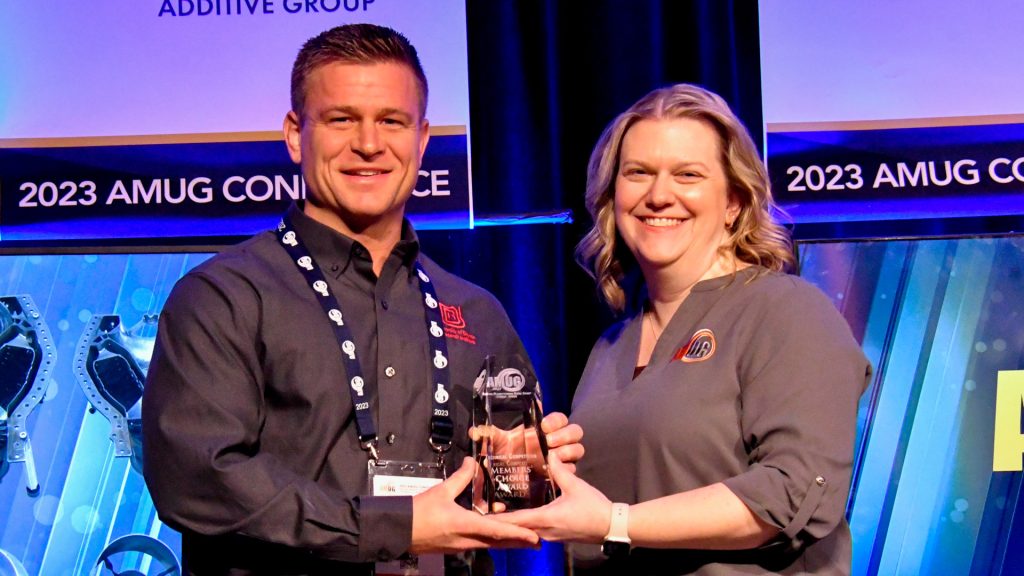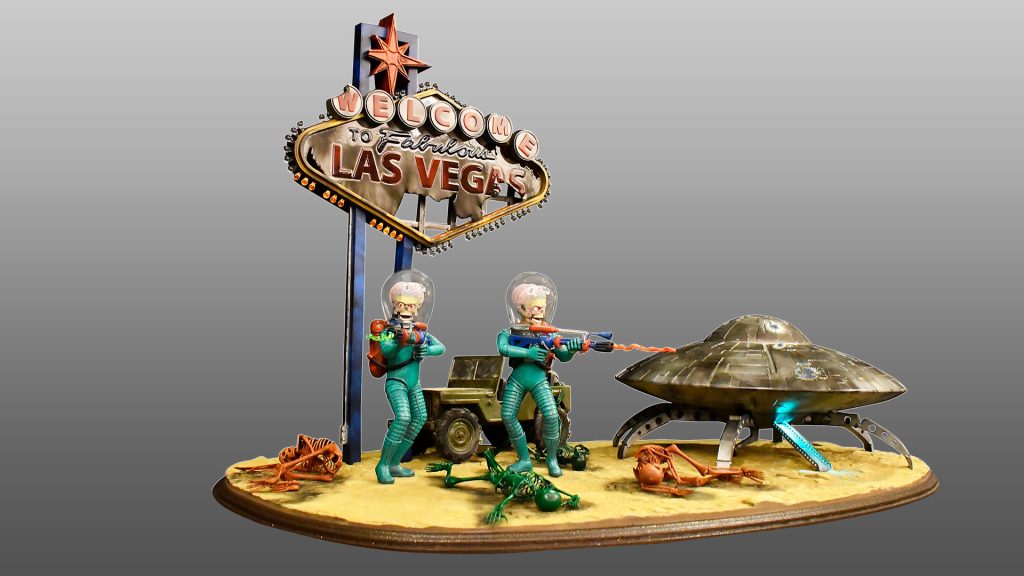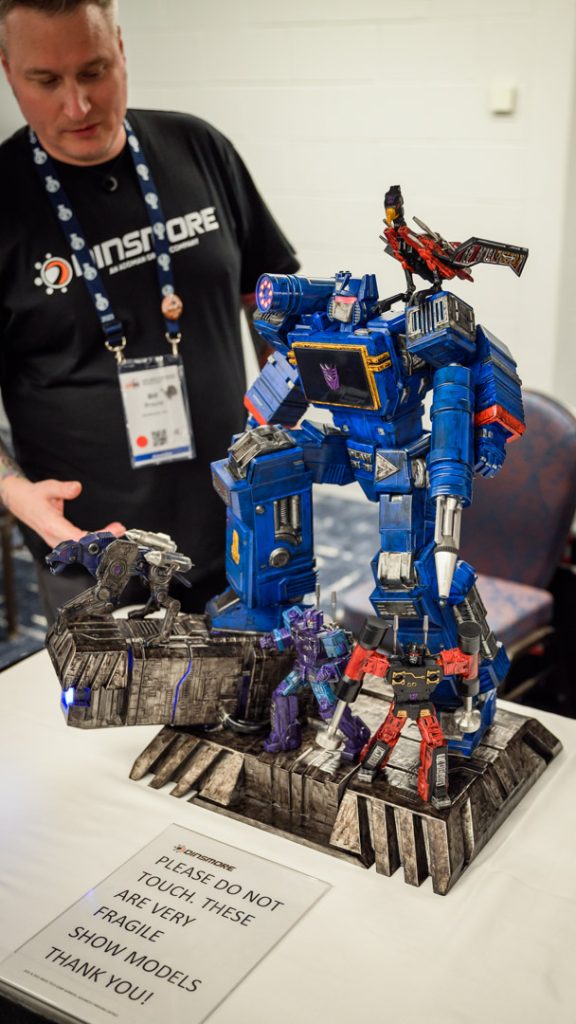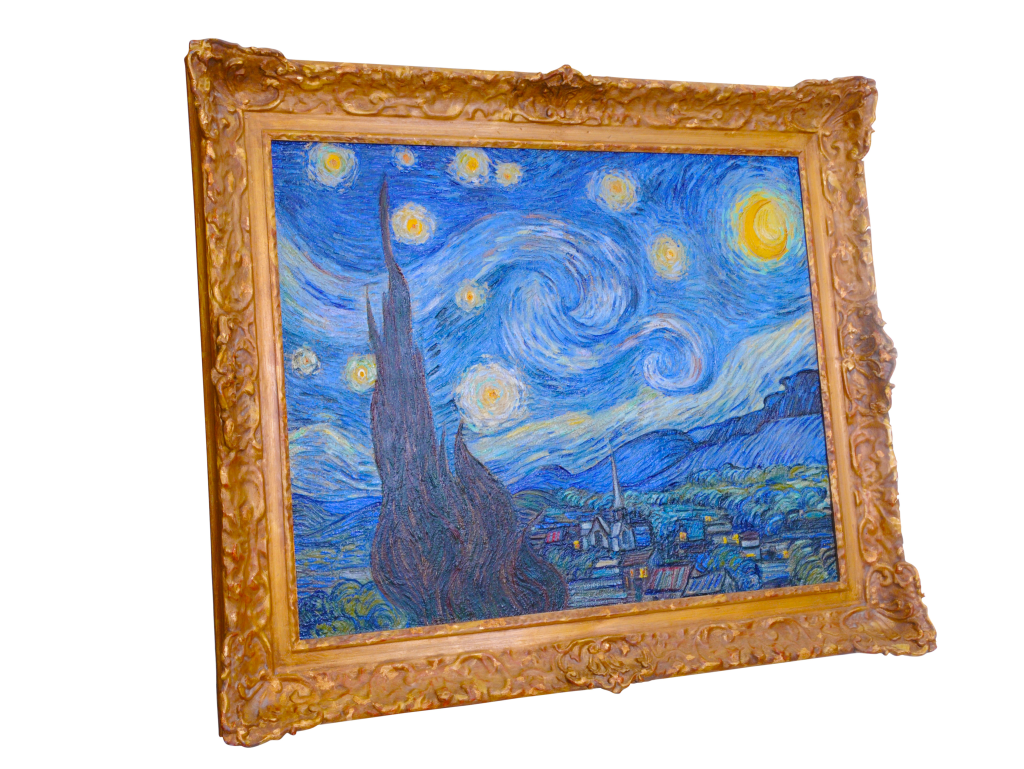I caught up with Bonnie Meyer, Chair of the AMUG Technical Competition Committee, and several past winners to get some tips about creating a winning entry; and the unexpected benefits of the competition.
Meyer, a mechanical engineering graduate, began her career at Stratasys in an application engineering role. “I was working with a great group of people in the additive space, but also, I really enjoyed working with such a range of customers,” Meyer noted. Her diverse experiences, ranging from special effects in movies to medical models with life-altering impacts, underscored the versatile applications of additive technology.

Meyer’s involvement with the AMUG Conference grew, eventually leading to her chairing the Technical Competition Committee. The Technical Competition under Meyer’s leadership has two categories: Advanced Finishing and Advanced Concepts. It showcases not just technical prowess but also innovative applications of additive manufacturing. “I had one judge a couple of years ago say, ‘I look for the thing that you could apply for a patent,’” Meyer stated, highlighting the ingenuity the competition fosters.
According to Meyer, the competition is a platform for showcasing capabilities in additive manufacturing in a non-competitive, industry-beneficial way. “It’s a unique experience… even if you are not entering, there’s still a lot of connections and a lot of knowledge,” Meyer added, encouraging participation from a diverse range of entrants. Meyer emphasized the unique collaborative spirit of the competition, fostering knowledge-sharing and problem-solving among participants. A hallmark of the AMUG Conference is that it is “not like a trade show; it’s more focused on an application,” she remarked, stressing the importance of real-world applications over technological displays.
Join our 2024 AMUG Conference preview webinar live on Tuesday 6th February.
Why enter the AMUG Technical Competition?
Addressing potential participants who might be hesitant to enter due to the high caliber of entries, Meyer encouraged participation, citing the invaluable connections and insights gained from the event. “Enter because…the conversations–I’ve had more people who are not the winners…say that I’m coming back next year. I had amazing conversations. I made connections,” she advised, highlighting the competition’s role in facilitating industry networking and collaboration.
Bill Braune, an AMUG DINO, Operations Lead at Dinsmore Inc, and three-time Advanced Finishing winner, got into model painting via Dungeons and Dragons. His intricate work includes models based on Mars Attacks and Transformers and comes from many hours of practical experience, “The first probably 100 I ever painted weren’t amazing,” he says.

What tips does Braune have for those planning to enter the Technical Competition, “Get rid of the fingerprints of the technology,” Braune says, “I don’t care what you see with your naked eye. The minute you put primer on it, it shows everything. It punches you right in the face.” Putting in the effort to prepare a piece before painting can reap dividends. “You’re being judged by DINOs. Those guys have great eyes,” he adds.
His advice to anyone on the fence about joining the competition? “My advice is, enter it. Even if you don’t think [your work is] good enough.” Braune believes that the friendly nature and experience abound in the conference environment provide ample opportunity to level up for those who seek it.

Andrew Sliwa is Managing Director at Custom Prototypes, where, together with several colleagues, he is behind two winning entries. “Winning a competition is a huge boost for your marketing… and also for business,” Sliwa notes. Sliwa’s conversation reveals a deep passion for art and making, a sentiment that has guided his career and his company’s direction. He shares the process behind their recreation of Van Gogh’s “Starry Night,” revealing, “We created a digital impasto on a flat 2D drawing, and then we just painted by hand.” This approach underscores the intersection of art and technology, showcasing how 3D printing can transcend its industrial roots to facilitate new forms of artistic expression.

Range and Ingenuity of Entries in AMUG’s Technical Competitions
Meyer highlighted the extraordinary range of submissions, from reimagined fossils by Custom Prototypes to complex metal structures. She expressed her perennial surprise at the ingenuity displayed: “I’m surprised by how surprised I am every year. I have no idea what to expect.”
One notable entry discussed was a jointless hull by MELD, which garnered significant attention. The variety of industries represented, from aerospace to medical, and the responses to global challenges like the pandemic underscore the competition’s breadth. Meyer’s recount of an intended entry, a full-size kayak, underscores the ambition and scope of the participants’ projects.
The technical prowess of these entries is not just in their design but also in the processes behind them. As Meyer pointed out, “It’s not always the part that’s made, but a lot of times, it’s the process they go through to get the end result.” This focus on process innovation is key in the additive manufacturing industry, highlighting the importance of repeatability and viability in production.
Meyer emphasized the significance of showcasing real applications over marketing hype in the competition. “[It’s important to get] these real applications out there, instead of just the ones that somebody thinks is gonna get a lot of clicks and a lot of likes,” she said, highlighting the role of practical, innovative applications in spreading awareness and knowledge about additive manufacturing. This approach aligns with her work in education and workforce development, where she often encounters the challenge of bridging the gap between hobbyist printing and professional manufacturing applications.
When asked about common characteristics of past winners, Meyer pointed to their distinctive industry-spanning innovation. “I think it’s the uniqueness,” she stated, noting the increasing diversity in entries, especially regarding industries touched and technologies used. This diversity reflects the evolving landscape of additive manufacturing, where combinations of technologies are becoming more prevalent.
Regarding the competition’s future, Meyer shared her insights on the potential need for category adjustments. She observed a shift in the balance between the advanced finishing and advanced concepts categories, attributing it to advancements in software, materials, and scanning technologies. “You can do more on the front end so that you don’t have to spend as much time manually removing supports and sanding parts,” Meyer explained, indicating how technological progress influences the nature of competition entries.
Technical Competition entries are accepted until February 23, 2024.
What are the near term trends in the 3D printing industry?
To stay up to date with the latest 3D printing news, don’t forget to subscribe to the 3D Printing Industry newsletter or follow us on Twitter, or like our page on Facebook.
While you’re here, why not subscribe to our Youtube channel? Featuring discussion, debriefs, video shorts, and webinar replays.
Are you looking for a job in the additive manufacturing industry? Visit 3D Printing Jobs for a selection of roles in the industry.
Featured image shows Bill Braune with his Transformers entry in the 2023 Technical Competition. Photo via AMUG.



